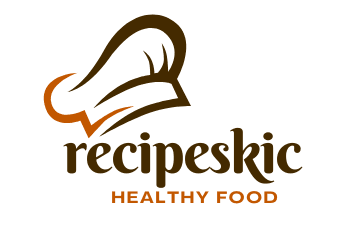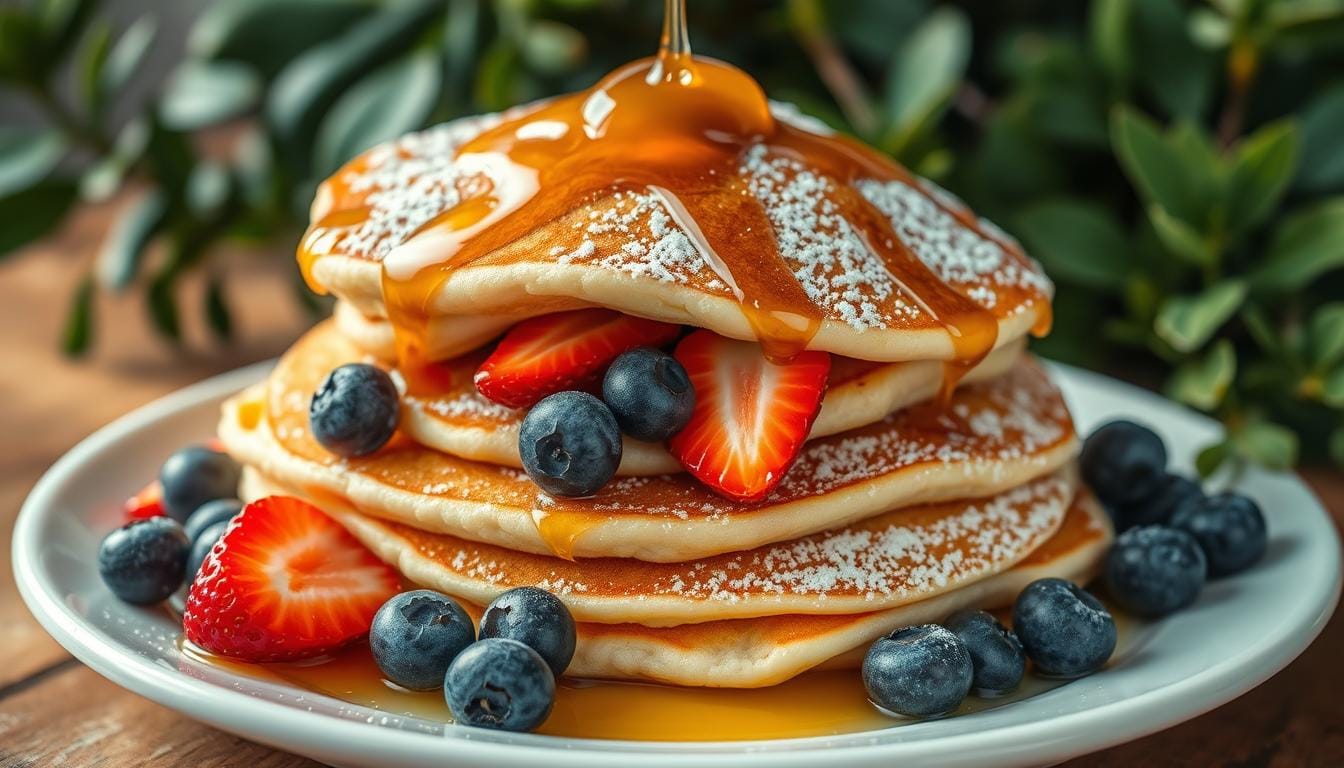Discover how to make perfectly fluffy good old fashioned pancakes with this foolproof recipe. Create a delicious breakfast that brings back warm memories of home.
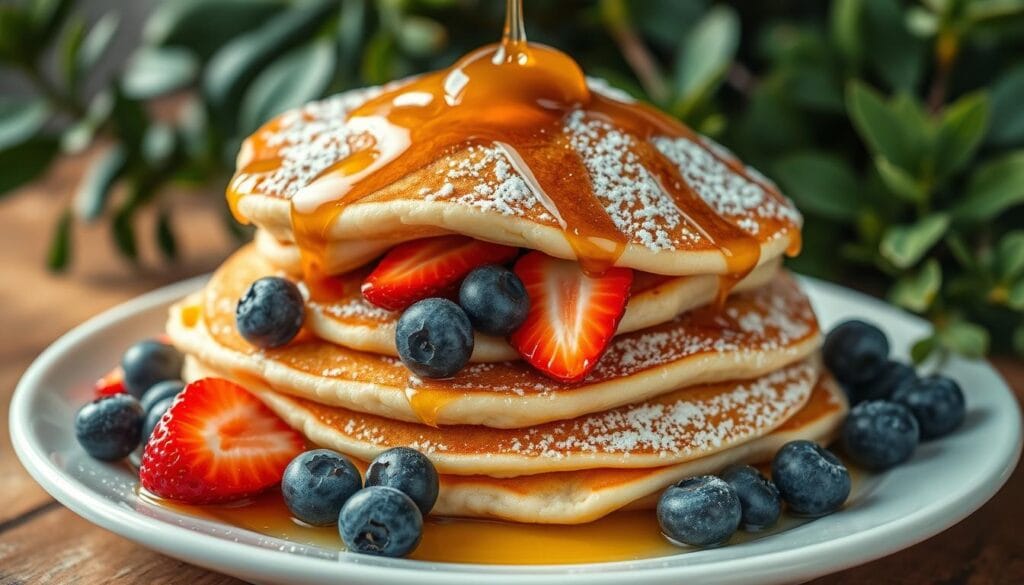
Wake up to the ultimate breakfast experience with good old-fashioned pancakes. They bring warmth and comfort to your morning table. These fluffy pancakes have been a cherished American breakfast tradition for generations.
Whether you’re a seasoned cook or a kitchen novice, mastering the art of creating perfect pancakes is easier than you might think. From the first pour of batter to the final golden-brown flip, these breakfast delights promise to elevate your morning meal with their irresistible texture and flavor.
This comprehensive guide will walk you through everything you need to know about creating the most delectable pancakes right in your own kitchen. You’ll discover secrets to achieving that perfect fluffy texture, learn about traditional techniques, and explore mouth-watering serving suggestions that will make your breakfast unforgettable.
Key Takeaways
- Learn the secrets to creating perfectly fluffy pancakes
- Understand the rich history of American pancake traditions
- Explore expert techniques for pancake preparation
- Discover classic and creative topping combinations
- Master the art of pancake cooking from start to finish
Understanding the Art of Good Old-Fashioned Pancakes
Good old-fashioned pancakes are more than breakfast. They’re a journey through American comfort food. These diner-style pancakes connect generations with a simple, tasty morning ritual.
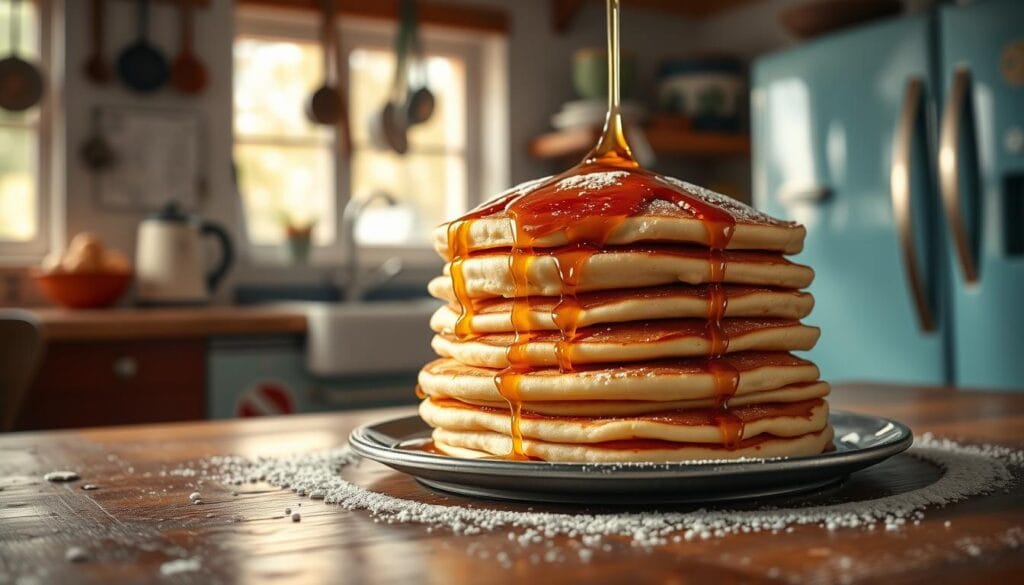
Pancakes have a long history in American cuisine. They’ve evolved from simple flatbreads to the fluffy treats we love today. Their story is filled with cultural significance and culinary innovation.
The History Behind American Pancake Tradition
Native American tribes first made cornmeal-based flatcakes. These early pancakes influenced recipes brought by European settlers. By the 19th century, good old-fashioned pancakes were a household favorite in the United States.
- Colonial settlers adapted Native American cooking techniques
- Griddle cooking became a fundamental breakfast preparation method
- Regional variations emerged across different states
What Makes a Perfect Classic Pancake
A perfect pancake has a few key traits:
- Light and airy texture
- Golden-brown exterior
- Soft, tender interior
- Subtle buttery flavor
“Pancakes are not just food, they’re a morning celebration of simplicity and comfort.” – Unknown Chef
The Science of Fluffiness
The magic of diner-style pancakes comes from chemistry. Baking powder creates air bubbles. Proper mixing makes them light and tender. Your pancake’s fluffiness depends on the right ingredients and careful preparation.
Mastering these basics turns simple ingredients into unforgettable breakfast memories.
Essential Ingredients for Your Homemade Pancake Batter
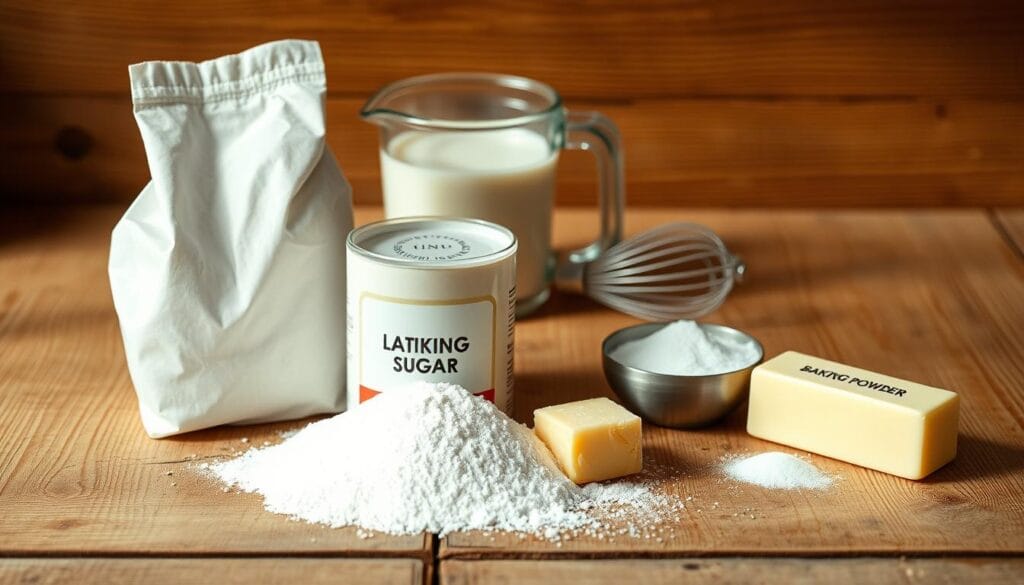
Making the perfect homemade pancake batter is all about the right ingredients. These ingredients turn simple parts into fluffy, tasty breakfast treats. Your family brunch recipes will shine with a batter that everyone loves.
The base of a great pancake is high-quality flour. All-purpose flour is best for traditional buttermilk pancakes. It gives the right texture. But the real magic happens with fresh ingredients that make your batter stand out.
- Flour: Choose unbleached all-purpose flour for best results
- Leavening agents: Baking powder and baking soda create that signature fluffy texture
- Liquid components: Buttermilk brings tanginess and tender crumb
- Eggs: Provide richness and help bind the ingredients
Buttermilk is key to perfect pancakes. It adds a tangy flavor and makes the pancakes light and airy. If you don’t have buttermilk, mix a tablespoon of vinegar or lemon juice into regular milk.
Pro tip: Always use room temperature ingredients for the smoothest homemade pancake batter!
Make sure your ingredients are fresh and measured right. A digital kitchen scale helps with exact measurements. This ensures your pancakes turn out great every time.
Mastering the Perfect Pancake Technique
Making fluffy pancakes is an art that needs skill and a bit of magic. Your weekend breakfast treats depend on mastering a few key skills. These skills turn simple batter into golden-brown perfection.
Proper Mixing Methods
The secret to tender, fluffy pancakes is in how you mix the batter. Overmixing can make your pancakes tough. Here are some essential mixing tips:
- Use a light hand when combining wet and dry ingredients
- Mix until ingredients are just combined
- Leave small lumps in the batter – they help create fluffy texture
- Let the batter rest for 5-10 minutes before cooking
Temperature Control Tips
Cooking temperature is crucial for your homemade pancake batter. The right heat ensures evenly cooked, golden pancakes:
| Temperature Range | Pancake Result |
|---|---|
| 325-375°F | Ideal pancake cooking temperature |
| Below 325°F | Pale, undercooked pancakes |
| Above 375°F | Burnt exterior, raw interior |
Flipping Like a Pro
Flipping pancakes needs practice and timing. Watch for these signs that your pancake is ready to turn:
- Bubbles form on the surface and start to pop
- Edges look dry and slightly raised
- Bottom is golden brown
- Use a wide spatula for smooth, confident flipping
With these techniques, you’ll make weekend breakfast treats that impress everyone.
Common Mistakes to Avoid When Making Pancakes
Making good old-fashioned pancakes can be tricky, even for experienced cooks. Knowing common mistakes helps you make fluffy pancakes every time.
- Overmixing your homemade pancake batter leads to tough, dense pancakes
- Using expired baking powder can prevent proper rising
- Cooking at incorrect temperatures results in uneven pancakes
- Flipping too early or too late disrupts pancake texture
The secret to perfect pancakes is in the technique. Your batter should be gently mixed, with small lumps. Overmixing makes pancakes tough and rubbery instead of light and fluffy.
| Mistake | Consequence | Solution |
|---|---|---|
| Cold Griddle | Uneven cooking | Preheat to medium heat (375°F) |
| Overmixing | Tough pancakes | Mix until ingredients just combine |
| Wrong Leavening Agent | Flat pancakes | Use fresh baking powder |
Keep an eye on your griddle’s temperature. A medium heat of 375°F makes pancakes golden-brown and fluffy. Test the surface by sprinkling water droplets – they should dance and sizzle.
Remember, practice makes perfect when making homemade pancake batter. Every mistake is a chance to get better at making pancakes!
The Best Toppings and Serving Suggestions
Make your weekend breakfast special with the right pancake toppings. They turn a simple morning into a fun food adventure. Pancakes are a blank canvas for you to try new flavors, beyond just maple syrup.
Choosing pancake toppings is about mixing flavors and textures. You can go for classic combos or try new, exciting tastes. It’s a chance to surprise and please your taste buds.
Classic Maple Syrup Combinations
Maple syrup is a key part of enjoying pancakes. Here are some timeless pairings:
- Grade A Dark Color maple syrup with butter
- Amber maple syrup over blueberry pancakes
- Bourbon-infused maple syrup for a fancy touch
Creative Topping Ideas
Try something new with these unique topping ideas:
- Savory Options: Crispy bacon crumbles
- Whipped cream and chocolate shavings
- Nutella and chopped hazelnuts
- Cream cheese and jam swirl
Seasonal Fruit Pairings
Fresh fruits make pancakes healthy and pretty. Try these seasonal fruit pairings:
- Summer: Fresh strawberries and peach compote
- Autumn: Caramelized apples and cinnamon
- Winter: Poached pears with vanilla
- Spring: Mixed berry medley
Remember, the secret to great pancake toppings is being creative and true to your taste. Feel free to mix flavors to make your own special breakfast dish!
Storing and Reheating Your Pancakes
Keeping the taste of good old fashioned pancakes fresh is key. Whether you’re making family brunch recipes or enjoying comfort food classics all week, knowing how to store and reheat is crucial.
For short-term storage, let your pancakes cool down first. Then, put them in an airtight container. Use parchment paper to keep them from sticking. This way, they’ll stay fresh in the fridge for 3-4 days.
- Cool pancakes at room temperature before storing
- Use airtight containers with parchment paper between layers
- Refrigerate for maximum freshness
Freezing pancakes is great for longer storage. Wrap each pancake in plastic wrap or foil, then bag them up. Frozen pancakes can last up to a month.
Here are some ways to reheat your pancakes:
- Microwave: Heat for 20-30 seconds
- Toaster: Use medium setting for crispy edges
- Skillet: Warm on low heat with a touch of butter
Pro tip: Always reheat pancakes just before serving to maintain their fluffy texture and prevent them from becoming soggy.
Variations on the Classic Recipe
Pancake lovers know that the classic recipe can be transformed to suit different tastes and dietary needs. Your family brunch recipes can become more exciting with a few simple modifications. These changes keep the delicious essence of diner-style pancakes intact.
Exploring different pancake variations allows you to create more inclusive and nutritious breakfast options. Everyone can enjoy these delightful adaptations. Let’s dive into some exciting changes that will elevate your pancake game.
Buttermilk Pancakes: A Tangy Twist
Buttermilk pancakes bring a rich, tangy flavor to your breakfast table. The secret to perfect buttermilk pancakes lies in the slight acidity. This creates incredibly tender and fluffy results. To make this adaptation:
- Replace regular milk with buttermilk
- Reduce baking powder slightly
- Add a pinch of baking soda to balance the acidity
Whole Wheat Nutritional Boost
For a healthier take on diner-style pancakes, whole wheat flour offers a nutritional upgrade. To prevent dense pancakes, try these tips:
- Mix whole wheat flour with all-purpose flour
- Sift the flour to remove extra bran
- Let the batter rest for 10-15 minutes before cooking
Gluten-Free Pancake Options
Dietary restrictions don’t mean sacrificing delicious pancakes. Gluten-free alternatives can be just as delightful:
| Flour Alternative | Texture | Recommended Ratio |
|---|---|---|
| Almond Flour | Moist and Rich | 1:1 with gluten-free blend |
| Rice Flour | Light and Crisp | Replace with gluten-free blend |
| Coconut Flour | Dense and Nutty | Use sparingly, add extra liquid |
Each variation brings something unique to your family brunch recipes. Experiment with these options to find your perfect pancake match!
Making Ahead and Batch Cooking Tips
Preparing your homemade pancake batter in advance can save time for busy families. Mix the dry and wet ingredients separately. Store them in sealed containers in your fridge for up to two days. When you’re ready, just mix them together and start cooking.
Batch cooking pancakes is great for family brunches. Cook many pancakes at once on a big griddle. This way, you can make a big stack quickly.
Let the pancakes cool completely on a wire rack. Then, stack them with wax paper in between. This prevents sticking. Finally, put them in freezer-safe bags for easy storage.
Reheating frozen pancakes is easy. Just pop them in a toaster or warm them in the oven at 350°F for 5-7 minutes. This keeps your pancakes crisp and delicious, making mornings easier.
Pro tip: Label your pancake batches with the date and type. This way, you can easily tell buttermilk from whole wheat pancakes. It’s a quick way to have breakfast options all week.
FAQ
What makes good old-fashioned pancakes different from other pancake recipes?
Good old-fashioned pancakes are fluffy and simple. They use basic ingredients like flour, eggs, milk, and baking powder. This mix creates a light pancake that’s a true American breakfast classic.
How can I ensure my pancakes turn out fluffy every time?
For fluffy pancakes, don’t overmix the batter. Mix just until combined. Use fresh baking powder or soda, whip egg whites, and let the batter rest for 5-10 minutes. These steps help make your pancakes light and tender.
Can I make pancakes ahead of time?
Yes, you can make pancakes ahead. Cooked pancakes can be stored in the fridge for 2-3 days or frozen for a month. To freeze, place parchment paper between each pancake and store in an airtight bag. Reheat in a toaster, microwave, or skillet.
What’s the secret to perfectly golden-brown pancakes?
The secret is temperature control. Heat your griddle or pan to medium-low (around 375°F). Look for small bubbles and slightly dry edges before flipping. This usually takes 2-3 minutes per side for a golden color.
Are there alternatives for people with dietary restrictions?
Absolutely! For gluten-free pancakes, use almond or rice flour. For dairy-free, try almond milk or water. Vegan options include mashed banana or commercial egg substitutes. These alternatives let everyone enjoy classic pancakes.
What’s the difference between using buttermilk and regular milk?
Buttermilk adds a tangy flavor and makes pancakes extra tender. Its acidity helps with lift and texture. If you don’t have buttermilk, a vinegar or lemon juice mix can substitute.
How can I prevent my pancakes from becoming tough?
To avoid tough pancakes, don’t overmix the batter. Mix just until combined. Use a light hand and let the batter rest for a few minutes. This allows the flour to hydrate and the leavening agents to activate.
What are some creative pancake topping ideas?
Try fresh berries, whipped cream, chocolate chips, or caramelized bananas. For savory, use crispy bacon and fried eggs. Seasonal fruits, nut butters, and cream cheese glaze can make your pancakes gourmet.
